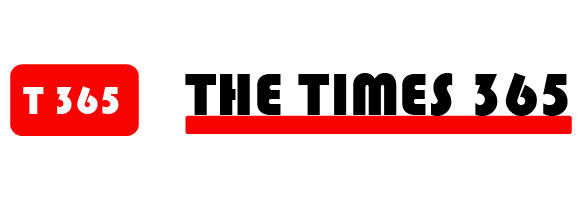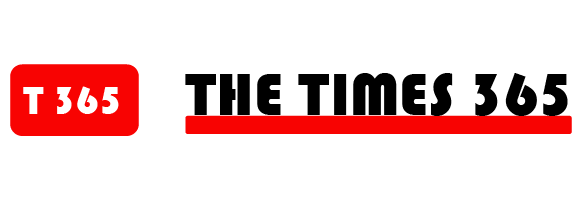Mesh routers promise dependable Wi-Fi throughout your home, and most of them follow through, but finding the best mesh router for the job can be tricky. Instead of a single router to wash your whole home in Wi-Fi connectivity, a mesh system combines the main router with one or more nodes that appear as a unified Wi-Fi network. Your devices will connect to the nearest option automatically to get the best speeds.
Most of us are stuck with placing our router in a less-than-optimal spot, depending on where the internet connection comes into our home. By placing a second or third node, you can extend Wi-Fi coverage where you need it. Whether you want to fix dead zones, deliver a stronger signal into the back bedroom, or have great Wi-Fi in the backyard, a mesh system could be the answer.
Before you dive into our lineup, it’s a good idea to consider whether a mesh system is right for you. Our guide on how to choose a router will help you answer that question and figure out what features you need. If you don’t want to switch to a new system, we also have advice on how to upgrade your existing Wi-Fi and, as always, ways to secure it and protect your home network.
Updated February 2025: We added a comment from TP-Link about the US government’s investigation and added supplementary information to our picks.
Our Picks
Power up with unlimited access to WIRED. Get best-in-class reporting that’s too important to ignore for just $2.50 $1 per month for 1 year. Includes unlimited digital access and exclusive subscriber-only content. Subscribe Today.
Things to Consider When Shopping for a Mesh System
Here are a few points to keep in mind when you are buying a new mesh Wi-Fi system.
Wi-Fi standards: Many devices support Wi-Fi 6E now. (Many of the best laptops and phones do, and it’s only growing more common.) Support for Wi-Fi 7 is also growing (the iPhone 16 range supports it). All the mesh routers we recommend as main picks support at least Wi-Fi 6, and they are backward compatible with older Wi-Fi standards. If you have a lot of new devices, consider Wi-Fi 6E or Wi-Fi 7. Our router shopping guide goes into more depth.
Internet speeds: There are many ways to upgrade your Wi-Fi, but your internet speed is limited by your internet service provider (ISP). If the maximum speed of data coming to your modem is 100 Mbps, that’s the fastest possible connection that any router can provide.
Bands: The top speed that router manufacturers claim on the box is all of the bands added together, which is disingenuous since you will only ever connect to one band at a time.
Coverage: While it’s good to have an idea of a router’s coverage and speed, understand that your mileage may vary. The construction materials in your house, your neighbors’ proximity and Wi-Fi networks, the devices you have with wireless connectivity, and the position of routers and nodes in your home are just some of the factors that can impact the performance of your Wi-Fi.
Backhaul: Backhaul channels are reserved for one mesh router or node to talk to another. It’s common for mesh routers to have a fast backhaul channel, enabling the main router to provide speeds as close to your full internet speed as possible to any node. This is also important for local network speed and may impact the performance of network-attached storage (NAS) systems, remote console play, and how quickly you can copy a file from one wireless device on your network to another.
QoS: Quality of Service, allows you to prioritize specific activities and their related apps. You can use it to ensure gaming, streaming, or video calls take precedence, which can be very handy in any household with limited bandwidth.
Ports: Ports and cables can help establish more stable connections. They may be essential if you have smart home hubs for lights and security cameras or network-attached storage that needs to plug into your main router. But they can also be useful on nodes to plug in streaming devices or game consoles and get the full benefit of any dedicated backhaul channel speeds your chosen system might offer.
Mesh vs. router: Although mesh systems are tempting, many homes will be better served by a single, well-placed Wi-Fi router. Check out the Best Wi-Fi Routers for options. Some of the routers I tested in my two-floor 1,600-square-foot home performed just as well or better than mesh systems.
Security: Most routers come with optional subscriptions for security, parental controls, and sometimes other extras like VPN service. You don’t need these subscriptions, but they can be handy and provide peace of mind. Just make sure you factor in the cost or opt for a system from a manufacturer like Asus, which offers them for free.
Wait for sales: Mesh systems tend to be very expensive when first released and are often buggy. By waiting a few months, you can expect deep discounts (50 percent is not unusual) and firmware updates that ensure more stable performance. We are considering revising review scores based on initial pricing and performance for mesh systems that are now more affordable and stable, but we will always add a note to indicate when we have done this.
To test these mesh systems, I use each one for at least a week (usually longer) in a busy family home of four with lots of video streaming, gaming, and video calls. I run speed tests (downloads and uploads). I transfer files on the network on multiple devices (including iPhones, Android phones, Windows PCs, and MacBooks) from different spots around my home, including files from devices connected to the main router to devices connected to nodes. I use NetSpot to survey signal strength throughout the house and create heat maps for comparison. I run the TamoSoft Throughput Test, and I turn the power and modem off and on to find out how each system recovers. I also test the mobile apps and web interfaces to see how easy it is to change settings, set up parental controls, and access security features.
Best Overall
The combination of speedy performance, impressive range, and lots of extra features earns the Asus ZenWiFi XT8 the top spot as the best mesh Wi-Fi system. (Even if it’s a bit of a mouthful.) I tested the two-pack, and the straightforward setup through the mobile app took minutes, though you have to keep the node close by during setup and then move it. This is a tri-band Wi-Fi 6 system with one 2.4-GHz band and two 5-GHz bands (one is reserved for wireless backhaul). Available in black or white, these units are fairly large. But they’re unobtrusive and look quite classy, with side vents to help dissipate heat. Each router offers three gigabit Ethernet ports, which is very generous, as well as a 2.5 gigabit WAN port and a USB 3.1 port.
At short, medium, or long range, the XT8 was consistently one of the fastest systems I tested, and speeds never dropped. The inclusion of AiProtection Pro, which adds anti-malware and parental controls powered by Trend Micro, is very welcome, especially since it doesn’t require a subscription, unlike most competitors. Just remember that using AiProtection means sharing your data with Trend Micro, so you might want to read its privacy policy. I like the parental controls, too. You can set up and reuse profiles, schedule bedtimes, filter by age group, and review activity. The Quality of Service (QoS) option lets you prioritize activities like working from home, gaming, or streaming, and you can limit bandwidth for specific devices.
The mobile app has a wealth of options, and the web interface is even more in-depth. It’s easy to split bands or set up a guest network. I also found that the app recognized most devices correctly. (Sometimes it’s difficult to identify devices from the attributed hardware names in router apps.) There’s support for AiMesh, which means you can easily add other Asus routers to expand your Wi-Fi system. The dedicated backhaul channel—or, the way the router speaks to its nodes and vice versa—is extremely fast, ensuring you get the full speed of your internet connection even from that node you placed near the backyard.
The major caveat with this mesh is that it can take some tinkering to get it working well for your home. If a failed firmware update is your idea of hell or you can’t face trial and error with settings, pick one of the systems below. My XT8 node initially refused to update its firmware, which took a couple of attempts to fix. I also had an issue with my Sonos speakers disappearing, which required a factory reset. Overall, using the XT8 has been a smooth experience. With a little patience and research, it’s easy enough for just about anyone to operate, but the depth of options will satisfy power users.
I also tested the slightly upgraded version of this mesh, the Asus ZenWiFi XT9 ($330). It appears identical but offers a few upgrades beneath the hood. Firstly, the 5-GHz band you can connect to offers 160-MHz channel width (theoretically double the XT8’s bandwidth), the processor is slightly more powerful, and there’s support for link aggregation. On the downside, just like with the XT8, I had some teething troubles with the XT9 that required a firmware upgrade and some tweaks to the settings. On the whole, it’s slightly better than the XT8, so if you see it at a similar price, I would go for the XT9 instead.
Best Budget Mesh Router
Note: The US government is reportedly mulling a TP-Link router ban after reports that vulnerabilities in the Chinese firm’s routers were exploited in high-profile attacks linked to the Chinese government. According to The Wall Street Journal, the US Commerce, Defense, and Justice departments are investigating TP-Link, though no evidence of any deliberate wrongdoing has yet emerged. TP-Link president Jeff Barney told WIRED the company is cooperating with the investigation, has a transparent supply chain with manufacturing in Vietnam, not China, and is now headquartered in California, having split from TP-Link Technologies, which focuses on mainland China. TP-Link is not the only brand targeted by malicious actors; Cisco and Netgear devices have also been infected in suspected Chinese state-sponsored attacks. We will monitor this situation as it develops before deciding whether we need to reconsider our recommendations.
The Deco X20 is an affordable Wi-Fi 6 mesh that delivers decent coverage and performance, with optional parental controls and antivirus protection, making it ideal for an average family home. I tested the 3 pack, and it was very easy to set ’em all up. The three routers are quite small and sport a cylinder design that blends in well. This is a dual-band system (2.4 GHz and 5 GHz). There are two gigabit Ethernet ports on each router.
Coverage and speeds are OK, falling well short of the Asus XT8 but beating the Eero 6 (below). The app is straightforward, and it’s easy to set up a guest network. Originally released with the free HomeCare software, this has since changed to a HomeShield system, and TP-Link has updated its HomeShield and parental control subscriptions. You get basic network security (router scan, guest network, QoS) and parental controls (create profiles, pause internet, block, and filter) included for free, but everything else requires a subscription.
HomeShield Security+ costs $5 a month or $36 a year and adds web and intrusion protection with notifications and reports. Total Security costs $70 a year and adds antivirus for devices, VPN service, and a password manager. Advanced Parental Controls costs $3 a month or $18 a year and adds time limits, downtime scheduling, rewards, app time limits, safe search, insights, and reports. While this granularity enables you to pick and choose what you need, it might be confusing for some, and I’m not keen on subscription creep. That said, most families will likely want the Security+ and Advanced Parental Controls, which will come in at $54 for the year ($1 cheaper than the HomeShield Pro it replaces).
The Quality of Service feature lets you prioritize activities like gaming or streaming or set priority devices. Importantly, you can split the 2.4-GHz and 5-GHz bands to show as two separate Wi-Fi networks. This is handy, as some smart home devices only operate on the former band. Similarly, there’s a mixed mode for WPA2 and WPA3 security. Some devices don’t work with the newer WPA3 standard, and some routers force you to choose one or the other, which can lead to issues. This mode ensures all your gadgets are on a compatible standard.
The web interface is basic and doesn’t add much, so I preferred using the easy-to-use app. However, it’s a little slow to update, and settings are still limited. It didn’t recognize many devices and listed obscure hardware manufacturer names, making it tough to figure out which devices to add to my kid’s profiles.
It wasn’t the speediest performer, but this system is fast and dependable enough for the average home. If you have a connection that’s 500 Mbps or better, it might be worth upgrading to the Deco X55 or Deco X60.
Best for Smart Homes
Amazon’s Eero 6 mesh system is one of the easiest to set up, offers fairly wide coverage, and delivers stable connectivity. It’s an elegant system, available as three identical routers or (a two-pack) as a main router and two small nodes. The Eeros blend in on a table or shelf, though the compact design leaves no room for any ports. (There are just two gigabit ports on the routers and none on the nodes.)
Although the basic Eero 6 was one of the slower systems I tested, particularly at longer distances, the speeds from the nodes were close to what I got from the main router. There were no drops, and it proved adept at sharing limited bandwidth. The mobile app is straightforward, giving you an overview of connected devices with the option to pause the internet and set up a guest network. I was also able to create profiles, group devices, set schedules, and fix bedtimes. Unfortunately, content filtering, other parental controls, advanced security, ad blocking, and activity insights require an Eero Plus subscription at $10 per month or $100 per year.
Eero is an Amazon company, and its routers come with Alexa support. Enable the Eero skill and you can pause the internet with a voice command through your Echo device, which is handy when your child won’t get off the computer to eat dinner. The Eero 6 router supports Matter and Thread and can pull double duty as a ZigBee smart-home hub in the same way Echo devices can, allowing you to directly connect some smart lighting, smart locks, and other ZigBee devices.
Two other tricks make Eero 6 systems attractive. An Echo (4th Gen), Echo Dot (4th or 5th Gen), or Echo Dot with clock (4th or 5th Gen) smart speaker can act as a Wi-Fi extender, offering an extra 1,000 square feet of coverage at speeds up to 100 Mbps for up to 10 devices. Eero also offers an Internet Backup option, so you can add multiple backup networks (Wi-Fi or hot spot) to keep you online if your main wired network goes down.
Eero’s simplicity will appeal to anyone who hates digging into settings, but there’s a cost. You won’t find any Quality of Service features for prioritizing activities, and you can’t separate bands. One final con with the basic Eero system I tested was comparatively slow transfer speeds, though this was not an issue for the higher-end systems.
There are few Eero systems on the market worth considering, offering a broadly similar experience. The first two are dual-band systems (2.4 GHz and 5 GHz). Folks with internet connections up to 500 Mbps can go with the regular Eero 6. If you have a faster connection, up to 1 Gbps, and your home is smaller than 4,500 square feet, then the Eero 6+ ($300) is the system to pick. Anyone with larger properties or above-average demands (lots of devices and people simultaneously using the internet) should consider the Eero Pro 6E ($550) (7/10, WIRED Recommends), a tri-band system that supports the 2.4-GHz, 5-GHz, and 6-GHz bands.
The Eero Max 7 ($1,360) (7/10, WIRED Review) is its top-of-the-line, Wi-Fi 7 option, boasting four Ethernet ports, two rated at 10 Gbps and two at 2.5 Gbps, but it will be overkill for most folks right now. Eero also just announced the Eero WiFi 7, though we haven’t tested it yet. You can dig deeper into the differences in our Eero buying guide. But whichever model you choose, keep an eye out for frequent discounts. All Eero systems are compatible with each other, which makes it easy to expand your network.
Best Value
Affordable and compact, the ZenWiFi XD5 is a solid alternative to our top pick for more limited needs or budgets. Refreshingly, you don’t have to create an account to set up and use this mesh network. Each of the three units features two gigabit Ethernet ports and can be wall-mounted. Basic security (AiProtection Classic) and parental controls come at no extra cost, and there is support for AiMesh, so you can mix and match other Asus routers.
Performance was smooth and reliable during my testing, with some impressively fast results for the price. I downloaded a 30-GB game in less than eight minutes. While this is a dual-band system, there is support for 160-MHz channels on the 5-GHz band. Asus says a 3-pack can cover up to 5,000 square feet, but speeds drop off as you move away from a router. To squeeze the best performance from the XD5, or any mesh system, connect the main router and nodes with Ethernet for wired backhaul.






